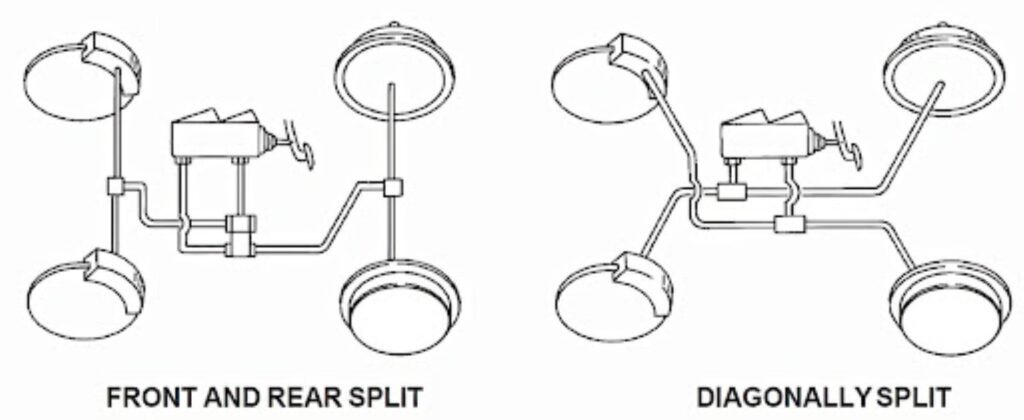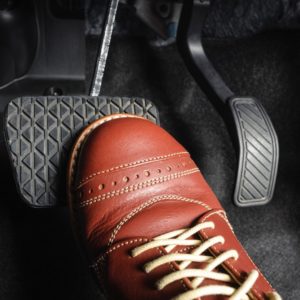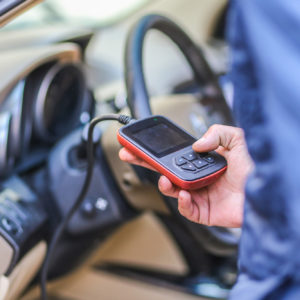You’ve heard about drum brakes and disc brakes. But have you heard about the dual-circuit brake system? Passenger cars have been using dual brake circuits since 1967 when the U.S. federal government mandated their inclusion in all newly manufactured vehicles.
The regulation was introduced to enhance vehicle safety by providing redundancy in the braking system, reducing the risk of total brake loss if a part of the brake hydraulic system suddenly fails. But even before the mandate, some vehicles had already begun using dual-circuit setups.
What Is a Dual-Circuit Brake System?
A dual-circuit brake system has two brake circuits. Each circuit services a pair of wheels. Furthermore, most dual-circuit brakes keep the hydraulic lines and components of the front brakes separate from those of the rear brakes.
In comparison, a single-circuit brake system uses one circuit for all four wheels. It lacks any redundancy. If the brake system develops a problem that compromises its performance, there’s no separate circuit that can pick up some of the slack.
Otherwise, dual-circuit brakes operate like other hydraulic braking systems. When you step on the brake pedal, hydraulic fluid leaves the master cylinder and flows through the brake pipes. The pressurized fluid reaches the slave cylinders at the wheels, which engage the brakes for those wheels.
Dual-Circuit Brake System Advantages
Having two separate brake systems reduces the chances of total brake loss. If one of the circuits develops an issue, the other usually remains unaffected because of its isolation.
Losing half the brakes is serious, but it’s still better than completely losing the ability to stop your car. One circuit can still brake your vehicle. While you must drive slower to compensate for the reduced braking performance, you don’t have to call for a tow.
The dual-circuit brake system also gives you a better chance of noticing something has gone wrong with your car and responding appropriately. When you lose one brake circuit, the other provides enough braking power for most driving situations, letting you retain control of your vehicle.

Types of Dual-Circuit Brake Systems
There are two types of dual-circuit brake systems. While they operate on the same principles, they differ in how they split the brake circuits.
Dual-circuit brake systems can also differ in the type of brakes they use.

Front/Rear Split Dual-Circuit Brake System
This system separates the front and rear brakes into two isolated brake circuits. It is the more common type of dual-circuit brake system.
Diagonally Split Dual-Circuit Brake System
The diagonally split dual-circuit brake system follows a different arrangement. Instead of assigning the brakes on the same end to a circuit, it pairs each front brake with a rear brake on the opposite side.
In a diagonally split system, the front right and the rear left brakes comprise one brake circuit. Meanwhile, the other circuit consists of the front left and the rear right brakes.
Diagonally split dual-circuit brake systems spread stopping power more evenly between the two circuits. Generally, the front brakes must apply more pressure because the vehicle throws its weight on the front wheels during braking. In a front/rear split brake system, the front brake circuit applies more pressure than the rear circuit. If the front circuit starts acting erratically, you’re stuck with the weaker rear circuit, which applies less pressure on the wheels that don’t bear the vehicle’s weight when you hit the brakes.
But the circuits in a diagonally split brake system have a front and rear brake. Thus, each circuit gets the same stopping power.
The downside to a diagonally split dual-circuit brake system is higher complexity. It’s no mean feat to tie a front brake on one of the vehicle’s sides to a rear brake on the opposite side.
Dual-Circuit Drum-Drum Brake System
This dual-circuit brake system is used by cars with drum brakes in the front and rear wheels.
Dual-Circuit Drum-Disc Brake System
The dual-circuit drum-disc brake system appears in vehicles with front disc and rear drum brakes. It combines the benefits of dual-circuit brakes and the newly introduced practice of front disc brakes and rear drum brakes.
Dual-circuit drum-disc brakes have several parts that distinguish them from other dual-circuit systems. Their core parts are the metering valve and brake proportioning valve.
The metering valve briefly delays the disc brakes, enabling them to engage simultaneously with the slower drum brakes. It ensures that all four wheels receive the same amount of hydraulic pressure, which helps smoothen the braking process.
Next is the brake proportioning valve, which reduces the hydraulic pressure applied to the drum brakes during hard stops. It prevents excessive pressure that might lock up the drum brakes, ensuring you can retain sufficient control of your vehicle no matter how hard you hit the brakes.
You can usually find the metering and brake proportioning valves downstream of the master brake cylinder.
Most dual-circuit disc-drum brake systems have a single assembly that does the job of both valves–delaying the brake discs and reducing the pressure on the drum brakes. The technical term for such an assembly is combination valves, but most people call it a proportioning valve.
Most proportioning valves in stock vehicles follow the manufacturer’s standards. Aftermarket proportioning valves have adjustable settings that allow you to customize the brake pressure distributed to the circuits.
Dual-Circuit Disc-Disc Brake System
Some modern cars use disc brakes for both the front and rear wheels and also separate their brakes into two circuits. These vehicles have the disc-disc equivalent of the drum-disc brakes.
How To Identify a Dual-Circuit Brake System
Dual-circuit brake systems sound awesome. But they’re not mentioned much. How can you tell if your car has two brake circuits instead of one?
The easiest approach is to look up your car’s year of manufacture. If your car or truck rolled out of the factory in 1967 or later, it probably comes with a dual-circuit brake system. 1967 is the year that the US federal government required the dual-circuit braking system in all newly manufactured cars.
While most cars built before 1967 lack a dual-circuit brake system, some models did feature early versions of the brakes. Figuring out if your vehicle is one of those exceptions takes more effort.
The key is your car’s master cylinder. You can usually find the assembly attached to the firewall on the opposite side of the brake pedal. Count the number of brake lines leaving the master cylinder. One line indicates that your car relies on a single-circuit brake system, while two lines prove it features dual-circuit brakes.
Some older dual-circuit brake systems have a master cylinder with two separate brake fluid reservoirs. Each reservoir supplies a brake circuit. You can determine the number of reservoirs in the master cylinder by counting the bumps on the lid. If the lid has two bumps, the cylinder has two reservoirs.
The main drawback to a master cylinder with two reservoirs is that you must keep track of two different brake fluid levels. That’s why modern cars that use dual-circuit disc-disc brake systems use a cylinder with only one reservoir for both circuits.
Keep Dual Brake Systems Working With Brake Master Cylinders
Whatever braking system you have, the brake master cylinder is critical to pushing fluid through your vehicle’s brake lines. Any issues with the brake master cylinder will cause braking system problems, which can compromise your vehicle’s safety. To keep your dual-circuit braking system working properly, you must replace the brake master cylinder as soon as it develops issues. It’s a good thing CarParts.com is a trusted source for all kinds of brake components.
Here at CarParts.com, our brake components are made following the precise specifications of the original part. This ensures that the replacement will function just like the original. Aside from providing high-quality parts from reputable brands, we’re committed to offering them at a more affordable price.
Don’t hesitate to replace your vehicle’s faulty dual-brake system components. Get brand-new brake master cylinders at CarParts.com today!
Any information provided on this Website is for informational purposes only and is not intended to replace consultation with a professional mechanic. The accuracy and timeliness of the information may change from the time of publication.






























